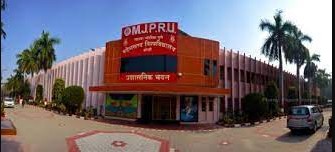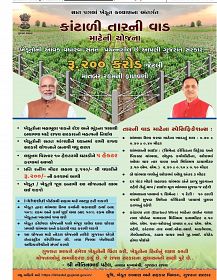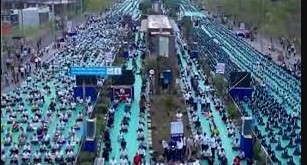
Well-proud of enticing and enrolling, in the Art and Science of the Knowledge, more than half-a-million young-brains, Mahatma Jyotiba Phule Rohilkhand University (MJPRU) is one of the major provincial-universities enjoying the dual character of affiliating and campus jurisdictions in the state of Uttar Pradesh. It is a vibrantly experienced, enthusiastic, and energetic quadragenarian sanctuary of higher education under the legislative control of the state government and deriving, as well, its jurisdictional and academic autonomy from the UP Universities Act, 1973. Viewed in terms of the historical development of universities in pre and post-colonial India it is a generation three university, the universities of the second half of the nineteenth century and the first half of the twentieth century (i.e. those established in between 1857 and 1947) being, to say, the generation first and second in that order.
With a territorial jurisdiction over nine districts of Western Uttar Pradesh stretching to 31,287 square kilometres and sheltering more than thirty million population – (2,74,35,583 as per census, 2011) – MJPRU is country size educational institution both area and population wise. Geographically, being bigger than, for instance, Belgium, Lesotho, Armenia, Albania, Israel, Fiji, Kuwait etc. etc., it could boast of possessing a (hypothetical country area) rank of 140 leaving behind 95 out of 234 countries of the world. Also, demographically, MJPRU territory populates a numerical size, leaving behind about a hundred other nations, metaphorically, equating Mozambique, Yemen, Cameroon etc. and well surpassing the likes of North Korea, Australia, Taiwan, and Sri Lanka etc. In terms of domestic statistics, MJPRU territorial jurisdiction makes a pie of almost one per cent of the country-area and more than two per cent of India’s population; the figures becoming a wholesome thirteen per cent of the area as well as of the population of Uttar Pradesh.
Apart from its administrative headquarter which is well laid-out to accommodate all the required – bot the necessary and desirable ones – facilities like a gigantic administrative block, teaching-infrastructure, library and laboratory structures, auxiliary facilities, and a residential area as well, MJPRU is currently (academic session 2022-23) maintaining Campus Faculties and Departments and exercising its jurisdiction over 587 affiliated colleges that prepare the students for graduate, post-graduate, and doctoral degree courses, as well as for many certificate and diploma programmes, in various fields of study and major subjects. it is a truly multi-dimensional and multi-disciplinary university by virtue of having almost all of the major, and minor as well, streams of global knowledge, subjects, disciplines, and courses or programmes either on its Campus or on the premises of the colleges affiliated to it.
It is remarkable to note that MJPRU enrolled a massive amount of students and scholars figuring, for instance, to 5,56,876 during the academic session 2022-23 only. Out of this total student-population of 5,56,876 the Campus-Departments of the university hosted 5,529 brilliant enrolments (ten per cent of the total) under different subject streams at post-graduate, under-graduate, and diploma level courses, the sub-divisions being 1,931 PG, 3,580 UG, and 18 diploma students; whereas the colleges affiliated to the university taught and trained a noticeable total of 5,51,347 young minds (a whopping ninety per cent of the total student-population), branched into several Faculties and numerous subjects, inter alia, ranging from social sciences, liberal arts, law, languages, commerce, and management to physical and live sciences, engineering and technology, and medical and allied sciences, the course-level segmentation yielding 87,216; 4,63,816; and 315 student-enrolments under the post-graduate, under-graduate, and diploma level courses, respectively. Moreover, as an integral part of its teaching and research activities, scholars have so far been awarded Ph.D. degree in the concerned subjects while research-scholars spread across different departments and colleges are actively pursuing the research work related to the same.
In 1761, when Nawab Ali Mohd. of Katehar region was suffering torture in the prison of Mughal emperor. Afghan marauder Ahmed Shah Afdali was looting Delhi at that time, Bareilly from the foothills of Ramganga befriended Afghan leader Hafiz Rahmat Khan. Under the leadership of Raidasi Prasad Lal, thousands of youths swore by the boiling water of the Ganges. Reached Delhi with Rahmat Khan to free Nawab Ali Mohammad. When Afghan robber Ahmad Shah Abdali extended his hand to shake hands with Hafiz Rahmat Khan in the name of religion and culture, then the war bankers who refused to give up their swords in the name of an Indian threw the blood-stained swords of those who killed the nation into the Yamuna. After freeing Ali Mohammad from the prison after washing him with the holy water, he ruled over Katehar and named the Katehar region Ruhelkhand.
A new culture was born in Rohilkhand which is known as Ganga Yamuna culture. The agreements made between Hafiz Rahmat Khan Raidaso Prasadi Lal and Rao Pahad Singh, under which schools and madrasas were established. Salary teachers were appointed, Adarsh Vidyalayas were praised and criticized that in April 1744, the immortal soldiers of Rohelkhand, Raidasiprasad Lal Sipeslar, Hafis Rahmat Khan and Nawab Hafis Rahmat Khan were martyred at the hands of the British, Mughals and Marathas. The British and their allies trampled the Rohello and their egalitarian culture, schools began to disappear and education based on religious gurukul came back into existence.
Religious communalism started increasing in place of equality in Rohilkhand and the doors of education started closing for the general public. The sprouts of rebellion began to sprout again against the British, which turned into flames. After the mutiny of 1857, the elites regained their right over education. The Christian priests made some changes in education to strengthen the English power, but the Aryasamaj propaganda of Swami Jayanand Saraswati established the DAV school in Rohilkhand as well, but the system remained limited to the hands of elite and affluent class. Slogans of Hindi, Hindu, Hindustan nailed the educational progress of Rohilkhand. Rohilkhand started burning in the fire of communalism. In these days, in 1905, Babu Radhe Lal Vyas and Dhankan Lal founded the All India Country Dalit Raj Sangh and demanded admission of Dalits in schools in the states of kings. When the Delhi Durbar took place in 1913, Babu Radhe Lal Vyas demanded a memorandum for the rights of Dalits and Dalit education and suggested the establishment of a university in Rohilkhand like Calcutta University. Time went on. Agra University was established by the British rulers in 1927 and Rohilkhand was neglected, it could not be opposed in general. An attempt was made by Lala Raghunandan Prasad MA Babu Radhe Lal to gather the movement but due to the figure of 36 between the British and the Rohilans, Rohilkhand was neglected. The corridors of British power were dominated by landlords, feudal lords and worshipers of Aagan language. The District Board Act was enacted in 1928. In 1937 Rai Bahadur Kunvardhankan Lal was made the Chairman of the District Board Bareilly and Babu Radhe Lal was made the Chairman of the Education Committee District Board. In this newly formed board, a proposal was sent to the United Provinces government seeking funds for education in Rohilkhand. This proposal was signed by the District Board Chairman Education Committee along with Babu Asharfilal Saxena, Thakur Bhagwan Singh, Pandit Dwarka Prasad Shardapdo Mukherjee, Khan Bahadur Mohammad Raza Khan, Rai Bahadur Shivprasad etc. Schools should be arranged. 1939 M/s Malcolm Hello, the Governor of United Provinces came to Bareilly and the District Board of Bareilly also proposed to him that Bareilly College should be made an independent university like Agra University, but in course of time, Bareilly College should not be made an independent school and become Agra University. I have been affiliated.
Even after being neglected by the authorities, the university movement did not stop, sometimes it went on at a rapid pace and sometimes at a slow pace. India became independent in 1947, Mr. Pratapchandra Azad, MLC was made from Bareilly in 1956. Mr. Azad put forward a proposal to establish a university in Rohilkhand in the Legislative Council, but the neglectful behavior of the British government towards the Rohilkhand division continued as it was. The then Congress leader of Bijnor and Minister of Uttar Pradesh Government Ch. Got it. When Pt. Darbari Lal Sharma became the chairman of Uttar Pradesh Legislative Council, he also put the matter of Rohilkhand University in front of the government, but the attitude of the government was not to cooperate in the development of Rohilkhand. Dr. Shyam Swaroop, Seth Damodarswaroop Babu Dawarilal Arya Samaj leader Babu Chandra, Narayan Saxena, Dalit leader J.N. Singh, Pt. Dharmadutt Vaidya, Dr. Satyabhushan, D.N. Names of Babu Satishchandra, Ku. Bhuvan Chandra, Sahu Gopinath Sahu Ram Swaroop, Maula Abdul Rauf, Pt. Gulab Rai Trivedi, Babu Trilok Singh, Laxmandayal Singhal etc. have not been forgotten in the development of Rohelkhand's education.
VISION
The Mahatma Jyotiba Phule Rohilkhand University strives to be internationally acclaimed University, recognized for excellence in teaching, research and innovation rooted in the value system and working towards building an intellectual infrastructure, provide the highest quality education to students, nurture their talent, promote intellectual growth and shape their personal development; remain dedicated and serve humanity through the creation of well-rounded, multi-skilled and socially responsible global citizens.
MISSION
Apart from being both a producer, preserver, and propagator of knowledge and an embodiment of global knowledge systems, Mahatma Jyotiba Phule Rohilkhand University aims, as its mission, at providing multidimensional quality education – theoretical, experimental, experiential, and practical; classical, modern, and transitional; ethical, aesthetical, value-based, and humanitarian; exogenous, indigenous, and eternal; techno-scientific, socio-moralist, and logical-rationalist; artistic, humanistic, and linguistics etc. – of comparably high standards to all the sections of the society in a reasonably inclusive manner and at an affordable-to-all cost structure and, thereby, aspires to be the new age catalyst of the accelerated transformation and progress in the geo-social space under its jurisdiction and a valued partner in the journey of the nation on the path of the enlightened progress.
For the actualization of the above-mentioned mission-ideals MJPRU prefers the following set of action-oriented objectives and takes a passionate pledge unto itself to pursue the same henceforth.
OBJECTIVES
To develop, preserve, and augment one of the best pedagogical infrastructure – teaching campuses, libraries, laboratories, IT enabling set-ups, sports stadia and grounds, and state of the art curricular and co-curricular auxiliaries etc. – across the institutional community of the University;
To employ, amass, and enrich the best minds in possession of the best academic and pedagogical skills and expertise as faculty and trainee-faculty, give them a duly supportive working environment, and help them be the exemplars in the fields concerned;
To significantly accelerate the gross enrolment ratio in higher education by way of bringing quality education at affordable costs to the doorstep of, as well as by motivating, all the eligible young boys and girls to enter the wonderful world of higher educational opportunities and, thereby, aspire for the unprecedented enlightenment and ascent;
To confer, by way of laying long a vast range of courses and subject streams all around, the ‘freedom to choose’, out of a wider basket, on the student community endowed within and outside the territorial area of the University;
To strive hard to augment, enrich, and consolidate the conventional income and revenue streams as well as to rope in the larger society to tap the required resources in the form of, say, the social pay-backs, philanthropy, endowments, institutional support, transnational funding, corporate social responsibility dole-outs, consultancy fee, patent licences, product design, and innovation etc. etc., so as to cut short the individual burden of costs and make higher education easily affordable to all, especially the ones on the lower ladder of the affordability;
To run apace the world community in all aspects co-incidental to the field of higher education as well as domestically to stay ahead of the contemporary and fellow institutions; and
To remain inspired in letter and spirit by National Education Policy, 2020 and, accordingly, keep prepared for the adjustments necessary for the mandated policy shift.










